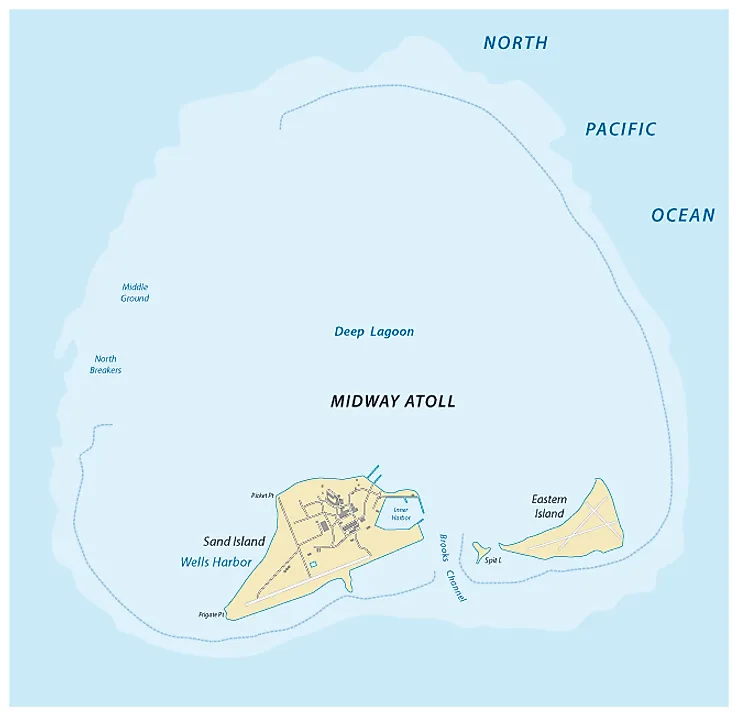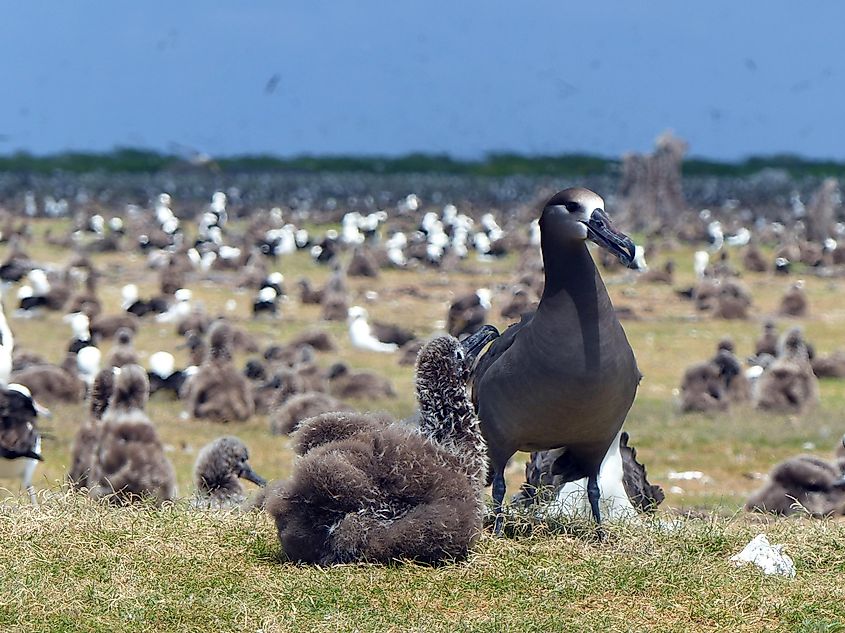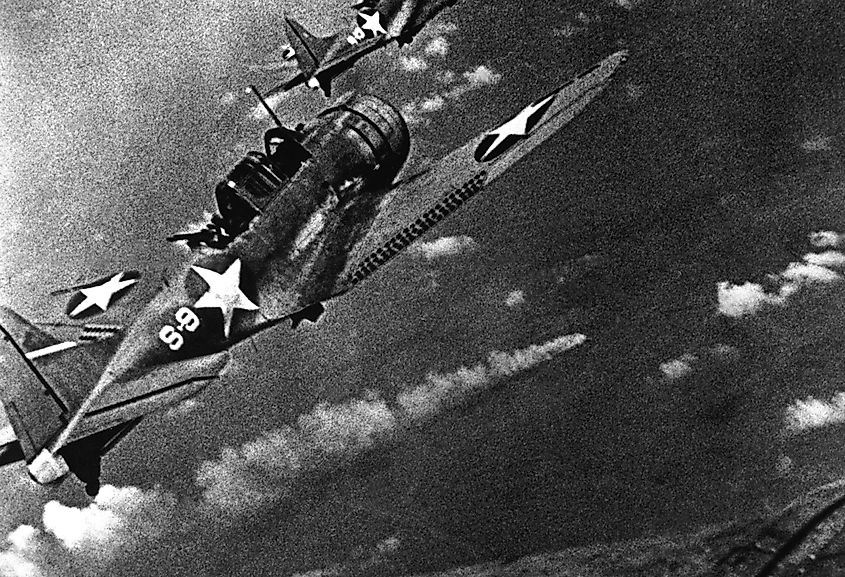Midway Atoll (original) (raw)
Coral reefs are biologically diverse marine ecosystems that are made up of calcium carbonate secreted by reef-building coral polyps. Fringing reefs, Barrier reefs, and atolls are the three classical types of coral reefs that are found in different parts of the world. An atoll is defined as a ring-shaped coral reef that partially or completely surrounds an 80-150 m deep central lagoon. Atolls are generally found in the tropical and subtropical regions as the reef-building corals mainly thrive in the warm ocean waters in these regions.
The Midway Atoll is an unorganized, unincorporated territory of the United States and the only atoll in that Hawaiian archipelago that is not considered a part of the US State of Hawaii.
Geography

Map of the Midway Atoll.
With an area of only 6.2 km2, the Midway Atoll is a small atoll that is situated in the North Pacific Ocean, roughly midway between the Continents of North America and Asia. The Midway Atoll is located approximately 4,100 km east of Tokyo; 5,200 km west of San Francisco; 2,100 km northwest of Honolulu and 259 km east of the International Date Line. It is geographically positioned in the northwestern portion of the Hawaiian archipelago.
The Midway Atoll forms a part of the Hawaiian-Emperor seamount chain, which is an undersea mountain range comprising of a series of volcanic islands, seamounts, and atolls that stretches from Hawaii to the edge of the Aleutian Islands. The Midway Atoll consists of a ring-shaped barrier reef and numerous small sand islets. The islands that form a part of Midway Atoll are the Eastern Island, Sand Island, and the small Spit Island.
It is believed that the Midway Atoll was formed approximately 28 million years ago after lava flowing from a hotspot created a volcanic island. Midway Atoll is the world’s second most northerly atoll.
According to the Köppen climate classification, the Midway Atoll experiences a tropical savanna climate with pleasant temperatures throughout the year. The atoll faces only two months of the dry season (May and June) and a wet season during the remaining part of the year.
Wildlife

Albatross breeding ground, Midway Atoll.
The Midway Atoll serves as a critical breeding ground in the Pacific Ocean for over 17 species of seabirds. Several native seabird species including the black-footed albatross, Laysan albatross, and the extremely rare short-tailed albatross can be found here. The US Fish and Wildlife Service relocated about 42 endangered Laysan ducks to the Midway Atoll to conserve the species in 2008.
About 250 species of marine fauna including spinner dolphins, green sea turtles, and Hawaiian monk seals have been recorded in the 1,214 km2 of the central lagoon and its surrounding waters. Over 200 floral species are found on the Midway Atoll, 75% of which are considered to be non-native. Many invasive plants like ironwood trees have been introduced on the atoll to act as windbreaks.
The Midway Atoll was designated as a National Wildlife Refuge under the jurisdiction of the US Fish and Wildlife Service. The atoll also forms a part of the Northwest Hawaiian Islands which have been designated as Important Bird Area by BirdLife International.
Brief History

Battle of Midway, WWII.
The atoll was first discovered by Captain N.C. Brooks on July 5, 1859. He claimed the islands for the United States and named them “Middlebrook Islands.” Captain William Reynolds took formal possession of the atoll for the United States on August 28, 1867, and at some point after that, the name changed to “Midway Atoll.” In 1903, the islands were placed under the jurisdiction of the US Navy by US President Theodore Roosevelt. During this time, a cable station of the first Trans-Pacific submarine cable was established on Sand Island. In 1941, as per an executive order by US President Franklin Roosevelt, the US Navy began constructing a naval and airbase on the Midway Atoll.
During World War II, the Battle of Midway was fought between the US and the Empire of Japan from June 4 to 6, 1942. This major decisive battle served as a turning point of WWII in the Pacific region. The Midway Atoll also functioned as a vital naval base during the Korean War and the Vietnam War and as a strategic outpost of the US during the Cold War. The atoll is currently inhabited by about 40 staff members, contractual workers, and volunteers who work under the US Fish and Wildlife Service.